Ballot measures: South Lake Tahoe voters make critical financial decisions for the city
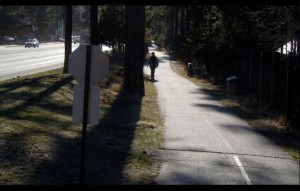
Linear Park in South Lake Tahoe received a makeover with the help of Measure R funds. Photo/LTN file
Publisher’s note: This is one in a series of stories Lake Tahoe News will be running leading up to the 50th anniversary of South Lake Tahoe on Nov. 30.
One reason South Lake Tahoe incorporated 50 years ago was to have a greater say in how it was governed. Residents were a bit disgruntled with how the powers that be in Placerville were doing things at the lake.
It took a vote of the populace to make the city of South Lake Tahoe a reality. But that wasn’t the end of ballot initiatives in the city. Through the years voters have had an opportunity to decide on a number of issues.
All tax proposals, by law, must go to voters – whether it’s at the city, county or state level. But a city can bring other issues up for a vote – like parking. The June 3, 2014, Measure P was the last item a City Council put on the ballot.
This came about because of the controversial metered parking program the city had initiated in various parts of town. While the issue had been talked about for years, approved by various councils and included in budgets, after it became a reality a group of citizens called Tahoe for Tahoe wanted the meters and the program to be abolished. Because of legal reasons they could not get a measure on the ballot themselves. The city, knowing it could essentially be stabbing itself in the foot, agreed to take the issue to the people.
And the people said get rid of the program. It required a 50 percent plus 1 percent vote to pass. It did so with 66.96 percent.
The meters associated with the program were removed Aug. 31, 2014.
The first vote put to the people after incorporation came on Nov. 6, 1984. It was called Measure C. This would have created the county of Tahoe. It failed, with the naysayers casting 22,027 votes and proponents having 18,434 votes.
This idea, though, has not gone away. There are people today who believe the basin portion of El Dorado County would be better off being its own county.
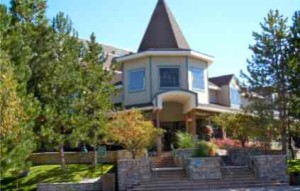
Lake Tahoe Resort Hotel, which was Embassy Suites when it opened, is a still a player in redevelopment.
Next came another Measure C, but for a completely different reason. This was to increase the transient occupancy tax to 10 percent in most parts of the city and to 12 percent at specific hotels in the redevelopment area.
Voters on Nov. 8, 1988, said yes with 77.5 percent. It required a 66 percent yes vote to pass.
This was the start of redevelopment in the city. The purpose of the higher tax rate was and still is to help pay off the $110 million bond debt in case property taxes were ever insufficient. Every year at least some of those TOT dollars have gone to the debt. That debt won’t be paid off for more than 20 years. There was a time before the recession that only $100,000 from the TOT was needed to help with the debt. As property values rise, the property taxes increase, which in turn means less TOT required to pay the bills and more of it going to the general fund.
The city didn’t ask the voters for anything else until 12 years down the road. This time it was a joint measure with El Dorado County and the Tahoe Paradise Resort Improvement District. The three formed the Community Facilities District Recreation Joint Powers Authority.
A special election was called on Sept. 19, 2000, where voters were asked to pay a 30-year $18/year tax to fund recreation. This was known as Measure S. The $6.5 million in bonds are to paid off in 2030. The money paid for the city ice rink that is now operated by a private company, the ball field next to Lake Tahoe Community College and $50,000 a year of TPRID, as well as bike trail improvements.
Sixty-nine percent of the voters said yes.
Hotel taxes were back before voters two years later.
Measure Z passed on Nov. 5, 2002, with 56.1 percent of the voters saying yes. It needed 50 percent plus 1 percent vote.
This measure added $1 to every hotel room night to add to the city’s transient occupancy tax revenue. TOT along with property and sales taxes are the three main revenue sources for South Lake Tahoe.
It was in place from Feb. 1, 2004, to Oct. 31, 2006. Measure Z brought in about $1.1 million a year when it existed, which at the time helped the city make ends meet.
This was the last time the city raised the TOT.

South Lake Tahoe lodging establishments are assessing a fee that goes toward marketing. Photo/Provided
However, in 2006 the South Lake Tahoe Tourism Improvement District was formed. The group of lodging establishments agreed to assess guests $3 per night at hotels-motels and $4.50 night at time shares and agent-managed vacation home rentals. That money is then used for marketing purposes by the district. It is considered a fee and that is why it did not have to go to the voters.
They did this the day after Measure Z expired.
The sales tax in South Lake Tahoe went from 7.25 percent to 7.75 percent after voters gave the go-ahead on Nov. 2, 2004.
Measure Q passed with 58 percent of the vote. It needed 50 percent plus 1 percent for approval.
That extra half percent goes directly to South Lake Tahoe. This is unlike most sales tax that is set by the state, collected by the state, and spent by the state. Some is filtered back to the county and then the city, but not a ton compared to what is collected.
Voters on Nov. 8, 2005, said no to raising the snow removal fee. This was called Measure R – not to be confused with the later recreation measure by the same name.
This Measure R would have increased the snow removal tax from $20 to $40 per parcel. It required a two-thirds approval, but only 54.2 percent of the voters said yes so it failed.
Voters on Nov. 3, 2010, were asked to revise Measures S with Measure B, which stood for ball fields. It would have given more money to ball fields, but the bike community came together to help defeat the measure.
It needed 66 percent to pass; it received 60.54 percent.
Next up was the idea to increase the maximum amount on business license fees. It would have increased the not to exceed amount from $3,387 to $10,000 per calendar year.
But voters on Nov. 2, 2010, said no to Measure E – but barely. It required a 50 percent plus 1 percent vote. It received 50.81 percent.
Ball field and bicycle advocates came together in 2011 to successfully rewrite Measure S. What is now known as Measure R was approved by voters that Nov. 8. It rejiggered how money could be allocated, making it less restrictive. More existing ball fields and bike trails have received upgrades instead of the money mostly going to new facilities.
On the June 5, 2012, ballot the business license cap was revisited by the city.
The analysis from the city attorney at time regarding Measure B said, “Passage of Measure B will reduce the business license tax on 95 percent of businesses in the city of South Lake Tahoe by 5 percent. The measure increases the maximum any business pays from $3,448 to $20,000 based on the tax rate for each type of business. The current business license tax rates and maximum tax are increased annually for inflation, but if Measure B passes, the tax rate per $1,000 of gross receipts and the maximum tax of $20,000 shall not be increased for inflation.”
It passed with 55.61 percent of the votes.
The next ballot measure likely to be put forth by the city will come in 2016. It may be to raise the transient occupancy tax or create an amusement tax or both, all with the purpose of creating a funding source for recreation improvements.




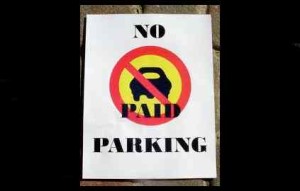
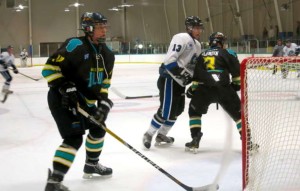
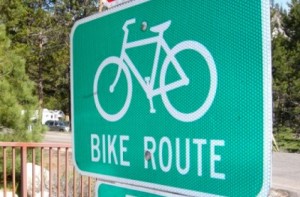
Nice job on the information in this news article.
1% should mean 1 vote IMHO.
“Rejiggered” is a great word that describes the process perfectly. Enjoyed the article.
Some of those 50 years put into perspective as to how we did or didn’t succeed in moving forward. . .Thanks, Kae !